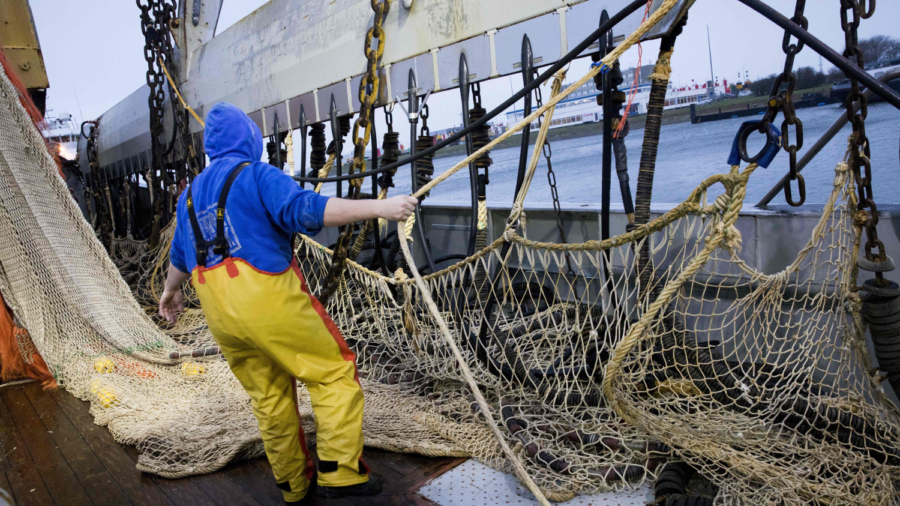LONDON—Banned in many parts of the world, electrical pulse trawling is damaging one of Europe’s largest marine sanctuaries, claim marine conservation groups.
In place of heavy chains that stir fish from the seafloor, electrical fishing trawlers drag electrodes that fire pulses into the mud, shocking the fish up and into the trawl net.
The method is technically banned in the EU, but after being approved for limited scientific research it blossomed in the Dutch fishing fleet to become their main method for sole fishing.
Now, two marine conservation organizations have filed a complaint with the EU Commission, saying that Dutch vessels are illegally trawling over the Dogger Bank protected marine sanctuary in the North Sea, revealed by tracking data.
Charles Clover, executive director of Blue Marine Foundation, one of the organizations behind the complaint, said, “The Chinese used the technology in the 1980s but abandoned it because of its impact on fish stocks and the environment.”
“The mind boggles as to how the Commission and European Fisheries Ministers have permitted electric fishing on the Dogger Bank, which is legally protected under EU law because of its unique and important habitat,” Clover added.

The complaint comes as the European Union gears up for discussions on pulse fishing on Oct. 4. In January, the European Parliament voted for a full ban—removing all rights of Dutch trawlers to use the method—but the policy needs to pass two more lawmaking chambers.
Some fishermen report that pulse fishing is leaving fishing grounds like “graveyards.”
Frédéric Le Manach, Scientific director of Bloom, the other marine conservation organization behind the report, said that 50 to 70 percent of large cod have their spine broken following the electric shock.
The electricity also affects other marine life such as invertebrates and juvenile stages he said, and the physical action of the electrodes is also damaging.
‘There is nothing experimental about this’
Proponents say it is less destructive than the equivalent “beam fishing” method, and does not impact the sole (its primary target) in the same way as it does cod.
But disputes over the science are caught in the net of European fishing politics.
The EU started to allow pulse fishing for experimental purposes in 2006, allowing 5 percent of the fleet to use it.
Only the Dutch fleet took up the practice. Instead of their allotted 13 vessels, however, there are now over 80 trawlers using the technique, pulling in 92 per cent of all sole fish caught by Dutch beam trawlers.
“There is nothing experimental about this fishery, it is a fully-fledged commercial operation and its environmental impacts, while under-researched, are potentially very harmful, ” said Clover.
According to Bloom, the Dutch government had given millions of euros worth of subsidies to fishermen to convert their vessels to the practice—though most of these licenses were illegal.
Skewed by Politics
For their part, the Dutch accuse the French—their main fishing-trawler rivals—of pushing the environmental lobbying.
Scientific research commissioned by the Dutch Government that appeared to exonerate pulse fishing was later criticized by other scientists as being inaccurate and skewed for political purposes.
Jeremy Percy is executive director of Life Platform, which campaigns for low-impact, smaller-scale fishing methods.
Percy said, “The advent of electric pulse fishing was an answer to the probable banning of traditional beam trawling in the near future, promising far less fuel needed and lighter gear across the seabed.”
But there is no clarity to the science, says Percy. He says his objection to electrical fishing comes from the first-hand accounts of its destructive power from a “significant number of inshore fishermen.”
VisNed, which represents Dutch trawlers, has in the past denied that there is any proof to the criticisms of electrical fishing. VisNed did not respond to a request for comment before the time of writing.


